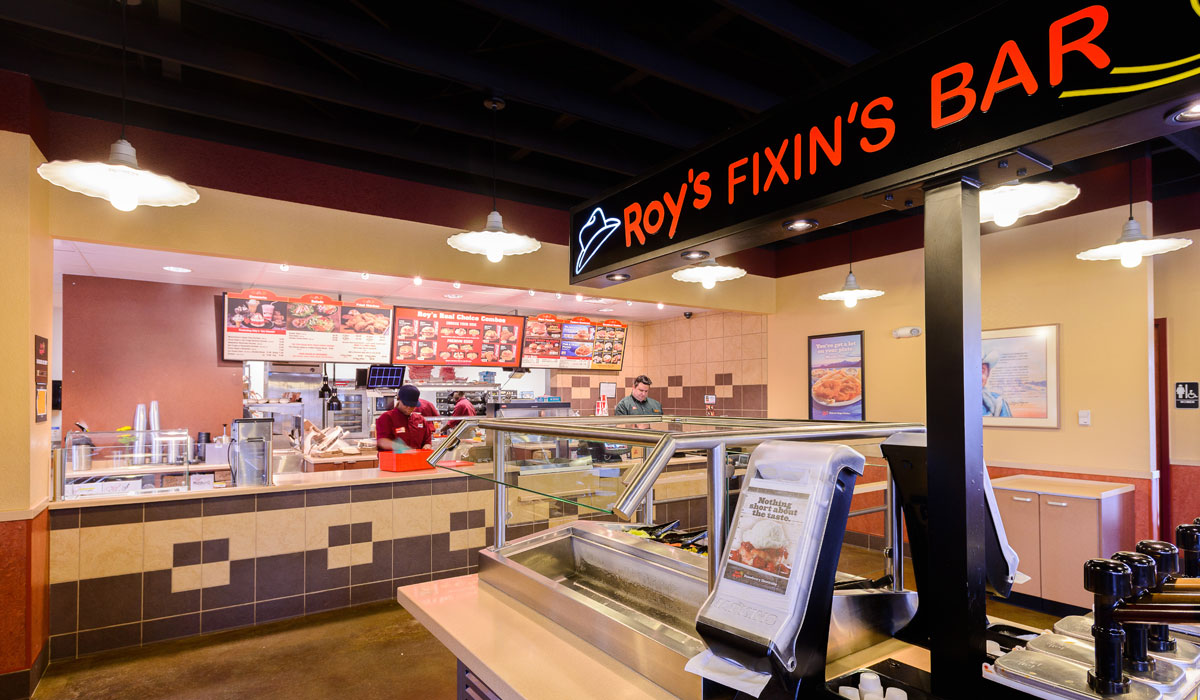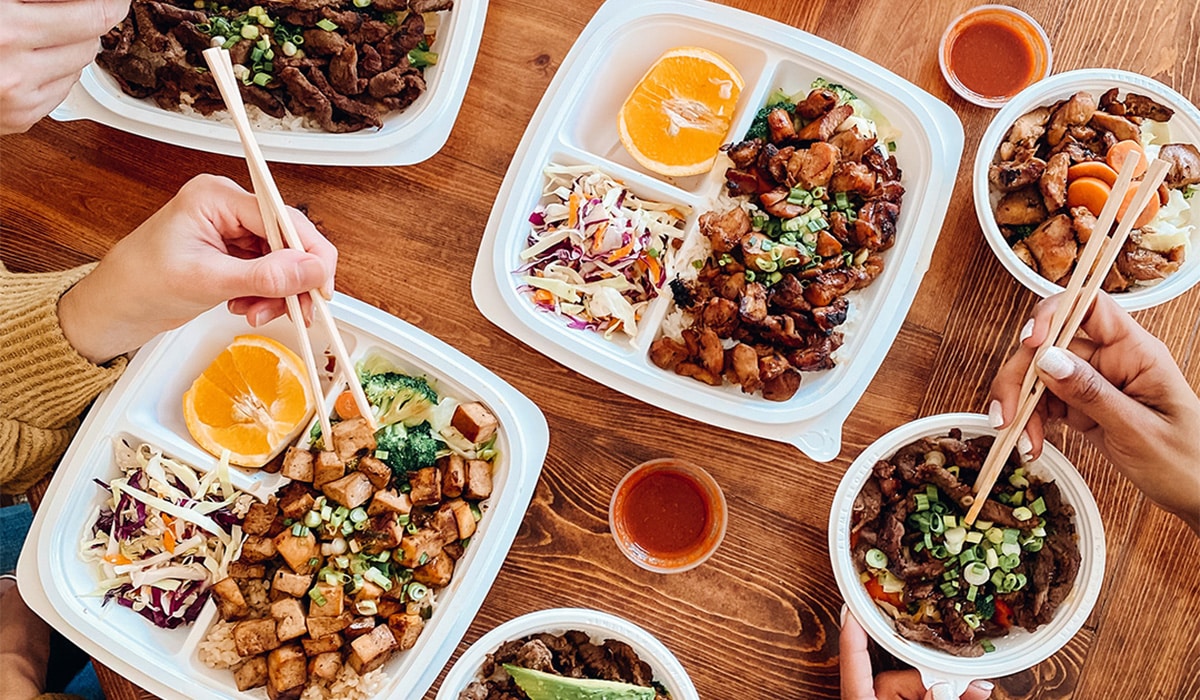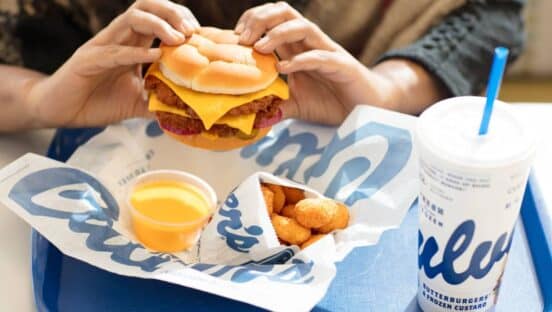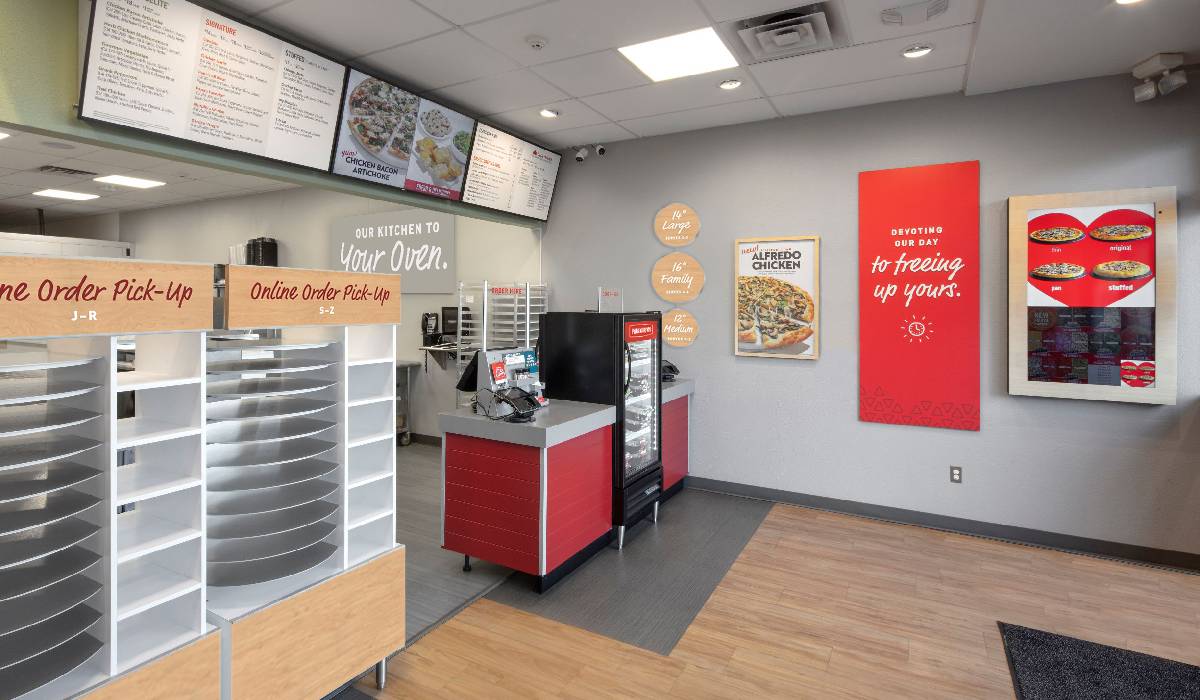Roy Rogers co-owner Jim Plamondon is a on mission. He and his team are revitalizing the Roy Rogers chain, updating it for a younger crowd, and reminding people why it was so popular to begin with. With a new online ordering platform, revamped website, and renewed growth, they are moving in that direction.
In order to understand the new strategy for revitalizing Roy’s, a quick history lesson is in order. As Plamondon recounts, the brand was born in 1968 in Falls Church, Virginia, under the auspices of Marriott Corp. His father, Pete Plamondon Sr., worked for Marriott, rising up to the position of executive vice president in charge of their restaurant division, overseeing Roy Rogers and other restaurant concepts under their corporate umbrella. Roy Rogers peaked at 648 units in the late 1980s, becoming a name brand all along the East Coast. However, Plamondon’s father left the company in 1979 to become a franchisee, and built up to 15 units of his own.
By 1990, Marriott sold off the chain when their hotel division faced financial woes, and Imasco, then the parent of Hardee’s, snapped it up in an attempt to transform Roy Rogers into Hardee’s units to break ground in the Northeast. That conversion attempt failed, and by the mid-90s Hardee’s had sold, Plamondon estimates, about 110 units to Boston Chicken/Market in the Philadelphia area, 150 units in New York and New Jersey to Burger King and Wendy’s, and 182 restaurants to McDonald’s. In the late 90s, Hardee’s was sold to CKE (Carl Karcher Enterprises), the parent company of Carl’s Jr.
Plamondon and his brother, Pete Jr., joined the “family business” after Hardee’s acquired Roy Rogers. They bought their father’s operating company Plamondon Enterprises Inc., which he had established to run his franchises, from him in 1998. Several years later, in 2002, the successful creation and implementation of their training and marketing materials had inspired other operators to send their teams to them for training as if they were a franchisor. Further, with loyal fans in the East craving the return of the brand, as witnessed through successful site openings and re-openings, they acquired the Roy Rogers trademark and rights to franchise the concept from Imasco, and mounted an effort to rebuild. “It was a much, much smaller chain by that time because Hardee’s had sold off all these restaurants to these other competitors,” Plamondon recalls. “When we bought the chain it was probably only 75 restaurants or so.”
Error: id `126` not found
|
Once they acquired the chain, Jim and Pete Jr. laid out their strategy to streamline and then re-grow the once robust brand. They decided to let the chain shrink a little by cutting loose unwanted franchisee operators. “When you’re a franchise system and your franchisor company is not investing in the brand, trying to build the brand, or managing the brand, the franchisees tend to go off on their own and do things that aren’t following brand standards,” Plamondon says. “They start to not follow the menu that they should be. They don’t reinvest in the business the way they should be. So we thought that there were a number of operators that needed to be weeded out of the system after we took it, and we allowed some of the franchise agreements to just expire and not renew them. We encouraged some restaurants to close down.”
Then they started growing again.
When the Plamondon brothers took control of Roy Rogers, the unit count had dropped into the 40s. It is now up to 55 across six states including Maryland, Virginia, West Virginia, New York, New Jersey, and Pennsylvania. They opened six new restaurants (five franchise, one company owned) in 2016 and one new franchise unit last year. They hope for at least two more in 2018. “We’re trying to reignite this brand and it’s very exciting,” Plamondon says. He reports that 24 of the 55 units are company owned and operated, and the other 31 of them are franchised, with the largest franchisee being HMS Host.
Roy Rogers teamed with Relevant Mobile, the creators of the company’s app, and relaunched a more user and mobile friendly website about a month ago. The Roy’s app is interfaced through OLO. “It’s a company that works with a number of brands like ours, and it’s really just tied into our app,” Plamondon says. The app works on desktop and mobile. “It’s growing and we know what we need to do to make it worthwhile. And I think it will be.”
The Roy Rogers co-owner understands that customers today seek convenience in ease of ordering and ease of pick up. “They’re on the go,” he says. “I think it’s exciting, and we like it because we can be prepared for seeing the orders coming in, so we’ll get the food ready for them right when they arrive.” The next potential phase will be using kiosks in their restaurants to help ease ordering. “I do think there are more and more people that would like to just be able to place their order on a kiosk rather than face to face now,” he says, adding that he does not want that type of ordering system to replace he people and the hospitality that his company provides.
“One of our strengths is our people, so I don’t want to go away from that,” Plamondon says. “I just think that we need to leverage that strength in providing a nicer guest experience, and while I think a kiosk might be an element of the guest experience, I hope that it doesn’t take the place of our people. That’s certainly not what I intend it to be.”
Plamondon believes that Roy’s food is a cut above typical fast food. “I think there’s a niche that is between fast food and fast casual that Roy Rogers represents in terms of our quality, the variety, and choice,” he says. “We’re the only quick-service restaurant that has roast beef, fried chicken, and burgers all under one roof. Nowhere else can you do that in the fast food or the quick-serve world. And then choice: we’ve got nine side items to choose from,” including cole slaw, mashed potatoes, baked beans, baked apples, a side salad, and mac and cheese. “Then the biggest choice that our guest has, that definitely nobody else has, is the Fixin’s bar. The guest is in control, and they can build their own burger the way they want it with fresh lettuce, freshly sliced tomatoes, freshly sliced onions, pickles, salsa, or banana peppers. You can load up all you want and it’s all in their control, so it really does hit what today’s customer is looking for.”
The current company plan is to open up four to six new Roy Rogers restaurants per year. They are also seeking the right operators for their brand and to bring them in more in the franchising world rather than on the corporate side. “We’re still going to open corporate restaurants, but not at that clip—maybe one of those four might be corporate every year,” Plamondon says. “We would be franchising it in a way for us to expand in markets that we’re not close to like Long Island and New Jersey. We’ve got to find the right people and find the right operators, and that’s easier said than done.”
He says that their operator quest comes down to finding people with the right level of experience who share the same values as the Roy Rogers brand. He also believes that the company has a large, loyal following, and their devotion can be rewarded through “this great loyalty program via our app.” Further, the company is bringing on a well-known sports personality as their spokesperson just in time for the brand’s 50th anniversary celebration this year.
Even with all of these positive goals and a landmark year ahead, Plamondon knows that Roy Rogers has a lot of rebuilding to do, and they are ready for the long haul. He acknowledges that competition with other burger chains is steep. He cites (roughly) 15,000 McDonald’s, 8,000 Burger King, and 7,000 Wendy’s units that dwarf his chain’s 55 restaurants. “It’s foolish for us to even try to compete with that,” he says. “We need to represent something different to our customers that can set us apart.”





